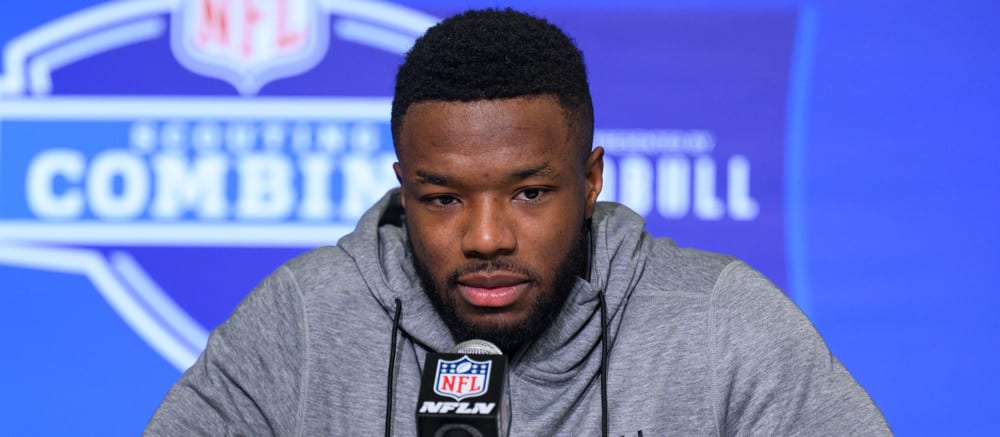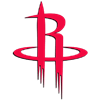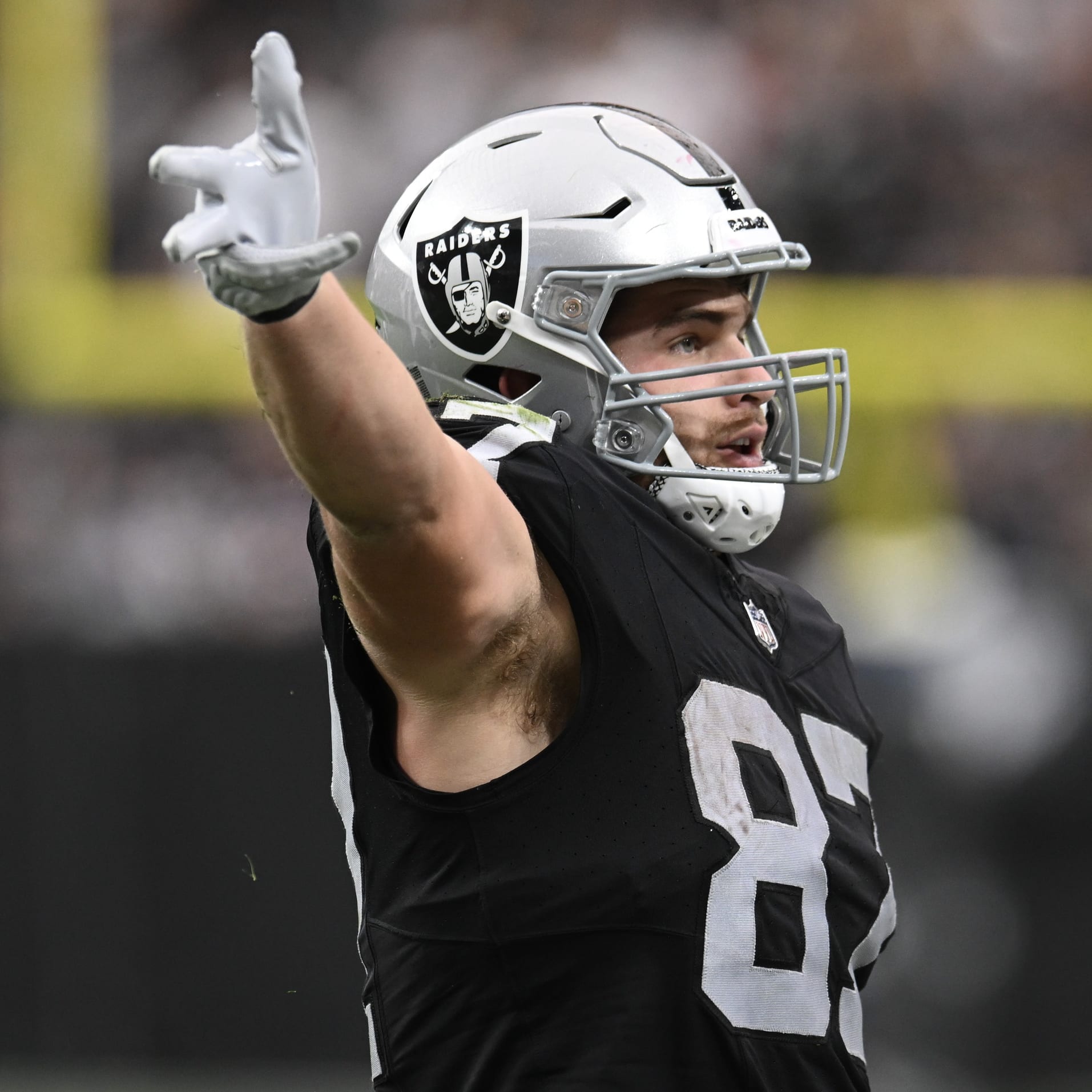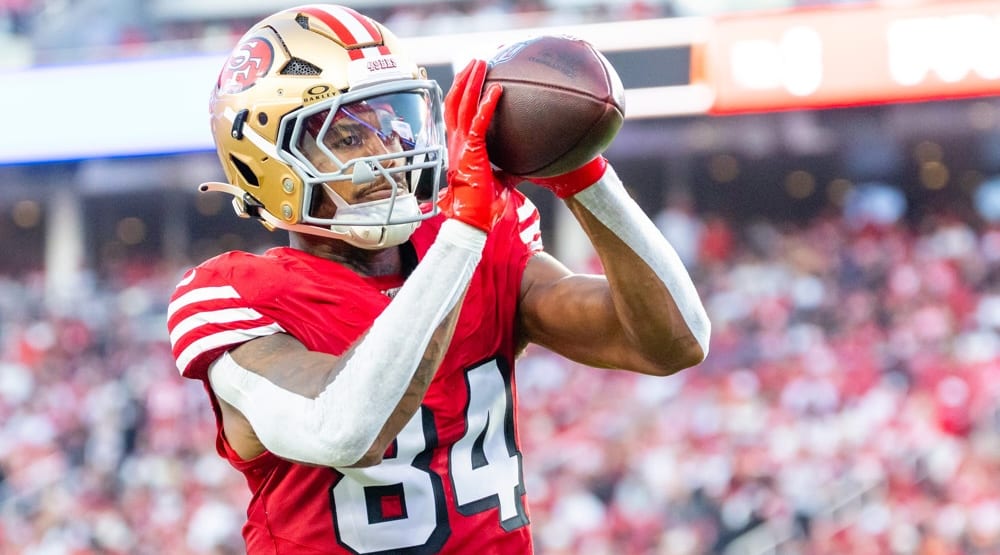This is the second part of a project to predict the post-combine ADP changes to the rookie class on Underdog Fantasy NFL best ball contests. With the combine weighing/testing done there will be movement in the draft order, and these posts mean to anticipate those changes.
The first post went through the first 17 rookies in the pre-combine ADP. You can read that article -- which includes the blue chip prospects like Bijan Robinson, Jahmyr Gibbs, etc. -- by clicking here.
This post will look at the next 18 rookies in the ADP, beginning with Tank Bigsby (172 ADP) and ending with Chase Brown (235 ADP).
Sign up for Underdog to receive a free 6-month subscription to RotoWire and first deposit match up to $100 with promo code RWNFL. Claim this special offer now at https://play.underdogfantasy.com/pc-MyVn4cbt6l.
Tank Bigsby, RB, Auburn (6-0, 210)
Bigsby did almost exactly what any reasonable expectation would have held for him going into the combine, but before the combine there was probably a broader overestimation of Bigsby due to an uninformed consensus. His 4.56-second 40, 32.5-inch vertical and 119-inch broad jump were probably not what the Bigsby fans had in mind. To the people who thought of Bigsby as a Day 2 pick his combine qualifies as a significant disappointment, and some such people presumably were among the buyers propelling his 172.8 ADP. Bigsby never had an obvious selling point as a prospect and now the myth around him is gone – his ADP could really take a tumble, though if he falls to the 20th round range he would be more worth the risk.
Pre-combine ADP: 172.8
Post-combine ADP projection: 210.0
Zach Evans, RB, Mississippi (5-11, 202)
Evans didn't do any testing at the combine, and he weighed in at an unimpressive 202 pounds. Evans is generally athletic but at 202 pounds you need to be very athletic just to project soundly as a rotational player. At 202 pounds being a starter pretty much isn't on the table, so Evans would ideally prove with athletic testing that he has the wheels necessary to make big plays on what will likely be a limited workload volume. Note: Evans doing no testing probably won't hurt his ADP as much as Bigsby did by testing poorly. The Mississippi pro day is March 29, so watch for Evans' results there to see if he can improve his stock then.
Pre-combine ADP: 178.8
Post-combine ADP projection: 200.0
Roschon Johnson, RB, Texas (6-0, 219)
Johnson should be a serviceable rotational back in the NFL, and his combine showing did nothing to dissuade that assumption. At 219 pounds Johnson has a solid build that should hold up to workload volume in a pinch, but a 4.58-second 40 on that frame is probably not exciting enough to keep the hype alive in the upcoming months. Johnson had been the recipient of an intense hype wave in Dynasty Twitter in February and his ADP jumped industry-wide as people played Telephone with the initial, already bad evaluations, and so his ADP was always likely to slide as people did their own research and snapped out of it. If Johnson's ADP slips into the 200s he would be much more worth consideration.
Pre-combine ADP: 181.3
Post-combine ADP projection: 195.0
Kendre Miller, RB, TCU (5-11, 215)
Miller was an extremely productive player at TCU – notably as good or better than Zach Evans when the two played together – and a 215-pound frame is definitely good in general. Miller did not do any athletic testing, however, and his athleticism never jumped out on tape. Miller's market was always founded mostly on his production and he can't have that taken away just because he sat out combine testing, but his investors presumably assumed he was at least an average athlete and in the meantime we have no assurance that he is. The TCU pro day is March 30, and Miller will have a lot at stake by then. If he torches then his ADP will jump, but it's not clear whether he's likely to test especially well.
Pre-combine ADP: 188.0
Post-combine ADP projection: 210.0
Dalton Kincaid, TE, Utah (6-4, 246)
Kincaid was one of at least a couple rookie tight ends who had been going too late in the ADP, so he always was due for a price increase even without factoring in the combine. Kincaid did not do any athletic testing at the combine but you should expect his ADP to climb as high as the 150 range in the near future anyway. The 246 pounds is a good weight in the meantime, and now we wait for Kincaid to run on March 23 at the Utah pro day. Again, don't expect Kincaid's pre-combine prices to last.
Pre-combine ADP: 196.4
Post-combine ADP projection: 155.0
Will Levis, QB, Kentucky (6-4, 229)
Levis didn't move the needle either way at the combine. His 34-inch vertical and 124-inch broad jump are strong figures for a quarterback, but it offers no new positive and does nothing to address his suspected negatives. He might climb in the ADP, though, if only because he's likely to be a top five pick and betting markets place him no higher than third in the QB order. Eventually those betting markets will change, I think, and Levis hype might pick up a little if they do.
Pre-combine ADP: 200.8
Post-combine ADP projection: 185.0
Rashee Rice, WR, SMU (6-1, 204)
Rice did better than expected at the combine, running a solid 4.51-second 40 while logging explosive numbers in the vertical (41 inches) and broad jump (128 inches). Rice's tape was weird at SMU and it's difficult to tell how polished he is at wide receiver tasks, but he clearly has a sort of innate ability to compete, because Rice's production was often strong at SMU and especially in 2022. He might have changed his profile from a late-round type to a mid-round type with testing like this, because you won't be able to criticize his on-field production.
Pre-combine ADP: 205.2
Post-combine ADP projection: 180.0
DeWayne McBride, RB, UAB (5-10, 209)
McBride's production and tape are incredibly convincing, but unfortunately he check into the combine at a much lower weight than expected and then was unable to test due to a hamstring injury. McBride could get himself back on the map at the UAB pro day on March 23, but there is a lot of pressure on him at this point, especially if he's going to weigh in that lightly. McBride played in the 215-to-220 pound range at UAB, where he was a horrifying big-play power back, but at 209 pounds he won't be able to play a power game in the NFL, especially not on any significant volume. McBride needs to play closer to 220 for his skill set to shine through, but if he was trying to slim down before the combine it might indicate that he expected to run some unflattering time. Hopefully he can bounce back there, because McBride is very good at running away from people.
Pre-combine ADP: 206.3
Post-combine ADP projection: 220.0
Kenny McIntosh, RB, Georgia (6-0, 204)
McIntosh was always a fringe guy in the RB rankings, so he was always walking a narrow path to conventional fantasy viability. His showing at the combine made that path narrower yet. At 6-feet, 204 pounds McIntosh has a very high stance with little anchor, and his 4.62-second 40 just wasn't enough to emphatically offset the concerns raised by his frame. McIntosh should still be fine as a passing-down consideration, but the concerns on first and second down might be enough to leave teams disinterested in McIntosh.
Pre-combine ADP: 214.4
Post-combine ADP projection: 240.0
Marvin Mims, WR, Oklahoma (5-11, 183)
Here we go. This is a Combine Winner you can get excited about. Mims' production at Oklahoma was always incredibly explosive, but some of his wide-open big plays were so uncontested it was difficult at times to tell whether Mims was so explosive because of his speed or because the Oklahoma system set up easy plays for him. Mims ran a 4.38-second 40 to go along with a 39.5-inch vertical and 129-inch broad jump at the combine, confirming that he has the wheels to continue getting open at the NFL level. Mims didn't run much variety of routes in Oklahoma's system, but testing like this confirms he has the tools to run any route depth. He belongs in the second round of the draft at worst, and his Underdog ADP is going to jump, too.
Pre-combine ADP: 221.0
Post-combine ADP projection: 175.0
Deuce Vaughn, RB, Kansas State (5-5, 178)
You're seeing some doom and gloom around the fact that Vaughn is 5-foot-5, but anyone could have known that before the combine. It's of course not good that he is that short, but the pro-Vaughn case has always acknowledged that he's an anomaly. Moreover, Vaughn is incredibly dense at 178 pounds. That's not enough to let him withstand major volume from scrimmage in the NFL, but it is good enough to make him effective on a per-play basis. Vaughn always needed to make it work with pass catching and big plays, and with his body density he has good anchor ability to pair with his explosiveness, which is basically the recipe for a player to miss tacklers. Vaughn unfortunately did not run a 40 at the combine, so between that and the headlines/memes about his height we can probably assume Vaughn will rarely go before the 20th round. The Kansas State pro day is March 31, and Vaughn could potentially reignite his fantasy stock a bit by posting a good 40 time there.
Pre-combine ADP: 225.1
Post-combine ADP projection: 235.0
Israel Abanikanda, RB, Pittsburgh (5-11, 215)
Abanikanda unfortunately did not do any testing at the combine, instead choosing to wait until the Pittsburgh pro day on March 29. People should expect his ADP to rise anyway – Abanikanda was simply going far too late all this time – but his ADP won't jump as much as it would have if he had run at the combine. Abanikanda is fully expected to run a sub-4.5 time, and more likely a sub-4.4 time than a one slower than 4.50. Again, expect Abanikanda's ADP to rise anyway, but expect it to really jump March 29.
Pre-combine ADP: 225.3
Post-combine ADP: 180.0 (higher yet after March 29)
Tyler Scott, WR, Cincinnati (5-10, 177)
Scott's prospect profile is very strong, but his public profile was lagging because of the passing volume limitations of the Cincinnati offense. Scott was always likely to prove himself at least as good of a prospect as former teammate Alec Pierce was in 2023, and Scott did that even while disappointing a tiny bit in the 40-yard dash. Scott ran a 4.44-second 40, but his previous track background tells us he's basically faster than that and typically runs in the sub-4.4 range. That suspicion is corroborated by Scott's combine jumps, which were unambiguously elite with a 39.5-inch vertical and 133-inch broad jump. Scott's production at Cincinnati is super clean, and his brand will become more popular as the draft approaches.
Pre-combine ADP: 227.9
Post-combine ADP projection: 175.0
Luke Musgrave, TE, Oregon State (6-6, 253)
Musgrave will see his ADP rise substantially. The league holds him in high regard and he's unlikely to fall out of the first 50 picks. Musgrave is well above average as a tight end athlete, running a 4.61-second 40 at the combine and offering an uncommon seam threat for his frame in the process.
Pre-combine ADP: 231.3
Post-combine ADP projection: 160.0
Darnell Washington, TE, Georgia (6-7, 264)
I was among those who figured Washington would be unlikely to stand out in fantasy due to a heavy blocking burden, but maybe that was wrong. Washington hulks like an offensive tackle, but he sure doesn't run like one. Washington ran a 4.64-second 40 at the combine, a terrifying ability for someone of his size and strength. That same blocking acumen I figured for a detriment to his fantasy value is what will make him especially impossible to stop as a receiving threat down the seam – if a safety crashes down to reinforce the edge, Washington simply can't be covered off the playaction. He can reach a Point B too far from the box for that crashing safety to get back in time. Still, make no mistake – Washington needs high YPT and a high touchdown percentage to make it work in fantasy. He might be the best real-life player between himself, Kincaid and Musgrave, but those two will definitely draw targets at a much higher rate (especially Kincaid).
Pre-combine ADP: 231.7
Post-combine ADP projection: 190.0
Cedric Tillman, WR, Tennessee (6-3, 213)
Tillman didn't do anything to grab headlines as the combine, but he quietly did well for himself and should at this point be a serious contender to crash Day 2 of the draft. Tillman is a bigger receiver and so his 4.54-second 40, 37-inch vertical and 128-inch broad jump all grade very well. He's a better prospect than former fellow Tennessee receiver Josh Palmer, far instance, and Palmer went in the third round of his draft. While he's not a conventional or coveted pick at this point, there's a really good case to take Tillman as high as the 190-range in the Underdog ADP.
Pre-combine ADP: 231.9
Post-combine ADP projection: 200.0
Nathaniel Dell, WR, Houston (5-8, 165)
Dell is another Jakeem Grant type, for better or worse. His 4.49-second 40 at 165 pounds was not good, and Dell's otherwise great Houston production is undermined by his age (turns 24 in October), so there are not many conventional reasons to rank Dell as a worthwhile best ball pick anyway. Dell's advocates were never dissuaded by that fact previously, though, so it's hard to see why his ADP should change much. With that said, I'd rather have receiver like Xavier Hutchinson or even Jonathan Mingo.
Pre-combine ADP: 234.5
Post-combine ADP projection: No change
Chase Brown, RB, Illinois (5-10, 209)
Brown is singled out by many as perhaps the biggest combine winner at running back, and indeed his ADP will rise sharply in light of his combine. Be careful to not go overboard, though – some of the reactions to Brown's numbers are a bit hyperbolic. Brown's 4.43-second 40, 40-inch vertical and 127-inch broad jump were all very good, and the kind of thing that should make him a good mid-round target. Brown's production at Illinois was never explosive, though, and a player of his frame and production level needs athletic testing like this just to avoid getting lost in the shuffle. Expect him to go in the third or fourth round of the 2023 draft and settle in as a useful but unremarkable rotational back. Be leery of taking him before the 12th round in Underdog best ball drafts, however.
Pre-combine ADP: 235.0
Post-combine ADP projection: 135.0







































